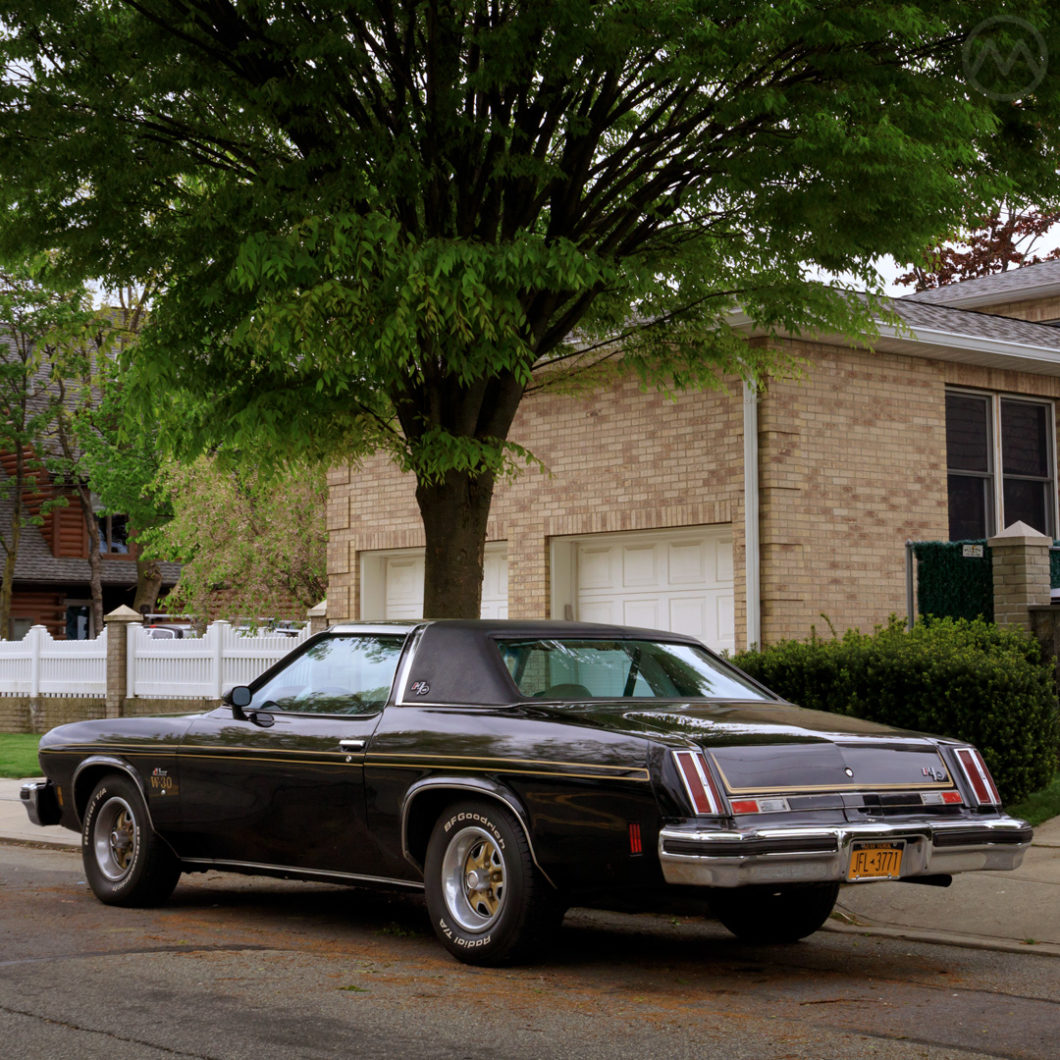The first GM car to use Hurst parts in an official capacity was a Pontiac (the 1961 Super Duty Catalina), but the most famous GM-Hurst collaboration would be the Hurst/Olds, offered in five distinct iterations from 1968 to 1984.
George Hurst’s link with Pontiac came via Jack “Doc” Watson, a former GM employee who in the early 60s became Hurst’s mobile repair specialist at various racing events. It was Watson’s connection to Pontiac that got Hurst products included there, and although Hurst Performance ultimately had many partnerships, Pontiac was it’s strongest link in the mid-1960s; by which time Watson was running Hurst’s Detroit Performance Center.
The First Hurst
What became the original Hurst/Olds was originally a 1967 proposal for a Hurst Firebird.
The raison d’etre for creating the Hurst Firebird, and by extension the Hurst/Olds, was to pack an engine larger than 6.5L into a mid-size pony car or muscle car – circumventing GM’s corporate ban on such installations. Hurst proposed to take built Firebirds and replace their engines with Pontiac’s largest V8s, then sell the cars at dealers as factory cars.
Since the Camaro and Firebird were built together, Chevrolet had to approve this idea. But former Pontiac chief Pete Estes was now running Chevrolet (and well aware of Hurst’s marketing flair), and wasn’t going to let the Firebird steal the Camaro’s thunder. Estes nixed the Hurst Firebird, but sent George Hurst and his Detroit Performance Center chief over to Oldsmobile’s John Beltz.
Beltz very much wanted to burnish Olds’ performance image and had already had a request for an Olds version of the Camaro/Firebird rejected, so he liked Hurst’s proposal of building 455-powered Cutlasses as a way to boost 442 and Cutlass sales and get noticed in the crowded performance car market.
Thus was born the original 1968-69 Hurst/Olds, a fast and flashy halo muscle car. Originally it was pitched as a hot rod for moneyed or middle aged enthusiasts, and it notably included many luxury features, including optional A/C, that hard core muscle car buyers typically didn’t opt for.
1968’s cars sold quickly, but 1969’s more visually flashy cars languished – possibly due to being too pricey for younger buyers who liked outgoing, flashy muscle cars, and too flashy for older moneyed buyers who could afford them. When GM lifted the engine-size ban for 1970, the H/O was suddenly redundant and with ‘69s left over, the model was dropped in favor of a 455-powered 442.
Pace Cars
A proposed “budget” successor was negotiated, but never emerged due to it’s high production cost (a second draft emerged as the Rallye 350). That might have been the end of the H/O. Until an extraordinary event happened – the 1971 Indy 500 pace car crash. Among other things, the highest-possible-profile disaster freaked out manufacturers already uncertain of supplying pace cars in the “safety” era.
Hurst Performance, by then no longer under the control of George Hurst, stepped up to create the 1972 Pace car when no manufacturer would – leading to a limited run of 1972 Hurst/Olds cars (coupes, convertibles, and a few rare wagons built for the race) and then to a renewed factory agreement for 1973.
The first “Colonnade” Hurst/Olds used many of the 1972 drivetrain pieces including the 455; and Olds continued the partnership for 1974 and 1975 (the H/O paced Indy again in 1974). By this time Muscle cars were all but dead, and that was reflected in the relative power and speed of the H/O and, starting in 1974, a base 350 engine (coded W25).
“W” codes were longtime Olds-speak for performance parts, though by 1974 they were mostly vestigial – the ’73 had still been a fairly potent car, but the ’74/’75 models were definitely feeling the impact of emissions laws – which among other things prohibited using dual exhausts in 1975 because of the installation of a Catalytic converter.
The Hurst Look
But people still wanted the look and image of a muscle car, and the 1974 H/O was more popular than ever – 1,851 were made, but only 380 were W30 455s..
In 1975 the H/O option switched to the more formal Cutlass Supreme – Oldsmobile pitched the car as a luxury hot rod – but it also debuted something that would soon be familiar in the late 1970s – Hurst/Hatch T-tops.
T-tops had already been a feature of the Corvette, but the Hurst/hatch tops did a good job of simulating some of the feel of a convertible while providing the safety of a coupe in that era of proposed rollover legislation. The Hurst/Olds was the first car to get them, but they quickly spread to other GM models and remained a popular feature into the 1980s (by then they were no longer supplied by Hurst).
1975’s engines were again a 350 (170hp) or 455 (190hp) and again a new sales record was hit – 2,535 made. This Bronx car, bearing W30 scripts, is a 455.
Olds, however, was selling every Cutlass it could build; again making the H/O redundant. Much of the equipment could be had on the 442, so buyers who wanted such a car could option something similar, but the H/O was on hiatus for awhile. It returned for encores in 1979 and in faster form in 1983-84, but those are tales for another day.

